The Annapurna Circuit Trek offers an extraordinary mix of natural beauty and cultural richness, stretching around 128 miles through the heart of Nepal. With its towering peaks and vibrant local communities, trekkers find themselves challenged both physically and mentally over the course of 15-20 days. This trek isn’t just about the stunning landscapes; it’s a journey that intertwines adventure with a deep appreciation for the region’s heritage. But as anyone who’s undertaken this trek knows, the experience is as unpredictable as the weather, leading one to wonder what surprises might await along the trail.
Good To Know
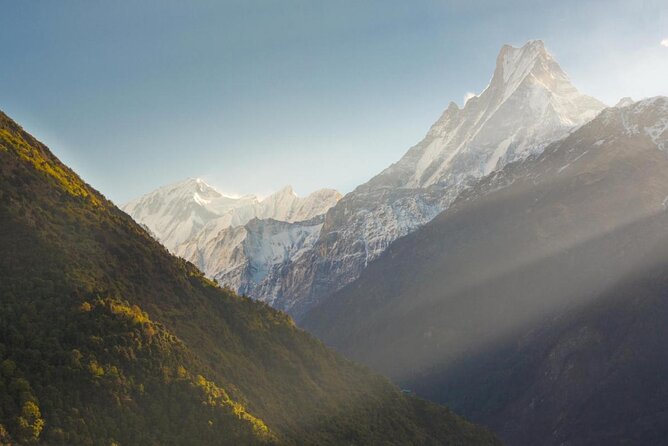
- The Annapurna Circuit Trek covers approximately 128 miles, offering diverse terrains and stunning mountain views, including Annapurna and Dhaulagiri.
- The trek typically lasts 15-20 days, allowing for proper acclimatization and culture with local communities.
- Accommodations include comfortable lodgings in Kathmandu, Pokhara, and mountain lodges, with full meal service and a diverse menu.
- Experienced guides and porters provide assistance throughout the trek, ensuring safety and enriching cultural insights.
- Best times to trek are spring (March to May) and autumn (September to November) for stable weather and clear skies.
Trek Overview
The Annapurna Circuit Trek is a breathtaking journey through the majestic landscapes of Nepal, offering trekkers an unforgettable experience.
Nestled in the heart of the Himalayas, this trek covers approximately 128 miles, taking adventurers through diverse terrains, lush valleys, and charming villages.
Starting from the bustling city of Kathmandu, trekkers ascend to the Thorong La Pass, which stands at an impressive 17,769 feet.
Along the way, they encounter stunning views of Annapurna and Dhaulagiri, two of the world’s highest peaks.
The trek typically takes around 15-20 days, allowing ample time to acclimatize and soak in the rich culture of the local Gurung and Thakali communities.
With its breathtaking scenery and culture, the Annapurna Circuit remains a must-do for avid trekkers.
You can also read our reviews of more tours and experiences in Kathmandu.
Inclusions and Amenities

Embarking on the Annapurna Circuit Trek not only promises stunning views and cultural experiences but also includes a range of amenities designed to enhance the journey.
Travelers can expect comfortable accommodation in Kathmandu and Pokhara, along with private or shared mountain lodgings. Meals are well-catered, offering breakfast, lunch, and dinner with diverse menu options, plus beverages like coffee and tea.
Transportation is provided in an air-conditioned vehicle equipped with WiFi. Essential documentation, including TIMS cards and permits, is managed for trekkers.
A highly experienced, government-registered guide and a porter assist with luggage, ensuring a smooth trek. Additional perks like a first aid kit, farewell dinner, and a souvenir complete the experience, making it memorable and hassle-free.
Exclusions to Consider
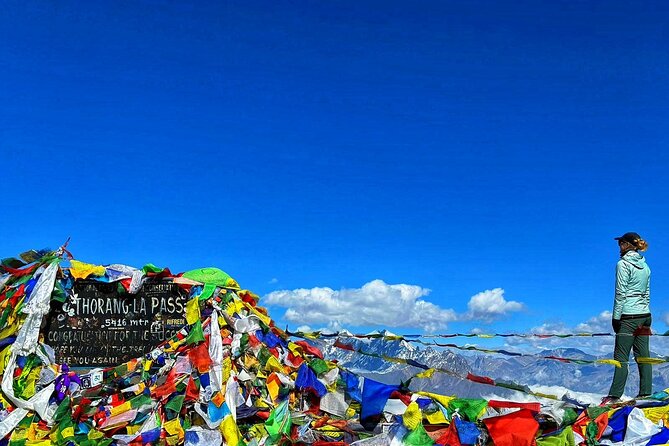
When planning for the Annapurna Circuit Trek, it’s crucial to be aware of certain exclusions that could impact the overall experience.
Understanding these factors can help trekkers budget effectively and prepare for their journey. Here are three significant exclusions to consider:
-
International airfare: Travelers must arrange and cover their own flights to and from Nepal.
-
Nepal visa fee: Obtaining a visa is essential, but it’s not included in the trek package.
-
Personal expenses: Costs for phone calls, bar bills, laundry, and other personal items aren’t covered.
Meeting and Pickup Details
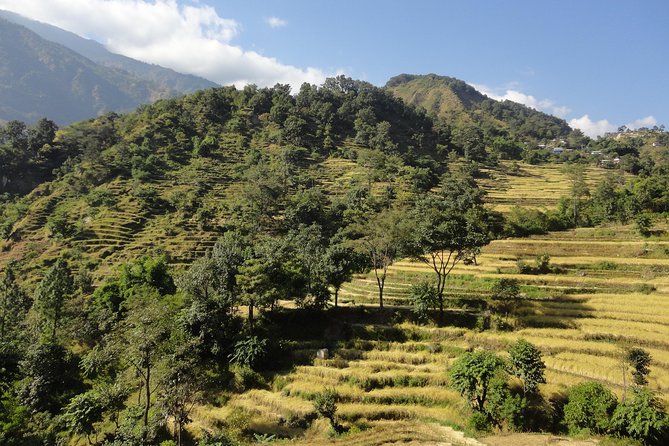
For trekkers eager to start their Annapurna Circuit adventure, convenient meeting and pickup arrangements are essential. They can expect flexible options tailored to their needs. Whether they’re staying in a hotel or arriving from other locations, arrangements can be made for pickups within Nepal. The trek typically kicks off at 12:15 am, ensuring an early start to their journey.
Here’s a quick overview of the meeting and pickup details:
| Detail | Information |
|---|---|
| Pickup Points | Anywhere within Nepal on request |
| Start Time | 12:15 am |
| Confirmation | Received at booking |
| Transportation Type | Air-conditioned vehicle |
| Additional Services | WiFi on board |
These arrangements help ensure that every trekker’s experience begins smoothly and stress-free.
Health and Safety Guidelines
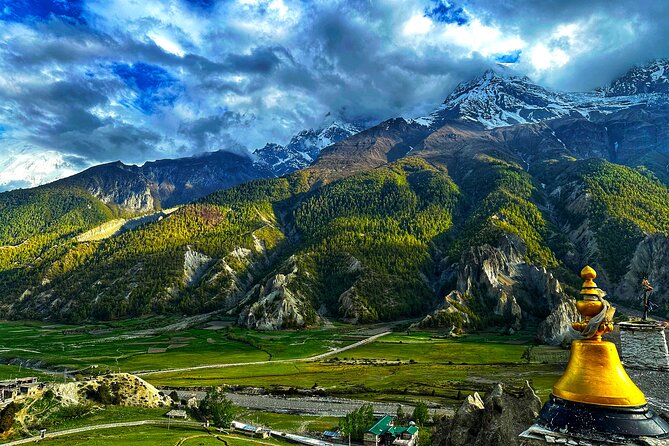
As trekkers prepare for the Annapurna Circuit, understanding health and safety guidelines is vital for a successful adventure.
Adhering to these guidelines ensures a safer and more enjoyable trek. Here are three essential considerations:
-
Physical Fitness: Trekkers should possess moderate physical fitness as the circuit involves challenging terrains and altitude changes.
-
Medical Conditions: Individuals with serious medical conditions, pregnancy, or back problems should consult a healthcare professional before embarking on this journey.
-
Travel Insurance: Comprehensive travel insurance is crucial, covering emergency evacuations and medical needs, providing peace of mind.
Trekking Itinerary
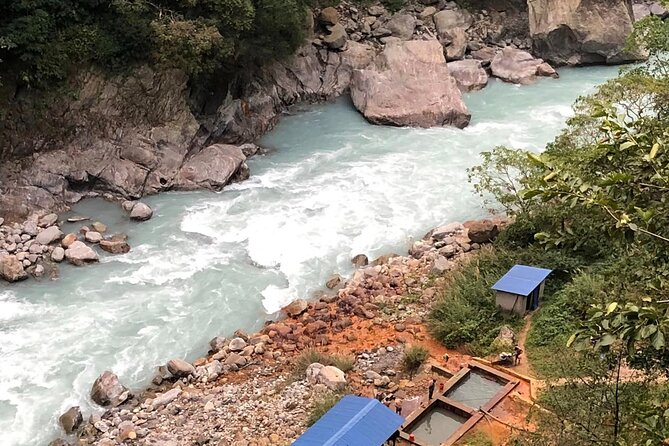
Embarking on the Annapurna Circuit Trek offers adventurers a meticulously crafted itinerary that spans approximately 14 to 21 days, depending on the chosen route and pace.
Each day presents a unique blend of breathtaking landscapes and cultural experiences, with trekkers moving through charming villages and lush valleys.
The journey typically begins in Kathmandu before heading to the trailhead, where hikers gradually ascend to higher altitudes, reaching the iconic Thorong La Pass.
Along the way, trekkers enjoy comfortable mountain accommodations and authentic Nepali meals.
A knowledgeable guide enhances the experience, providing insights into local customs and ensuring safety.
Each leg of the trek is designed to offer ample time for acclimatization, making the adventure both thrilling and manageable for participants.
Best Time to Visit
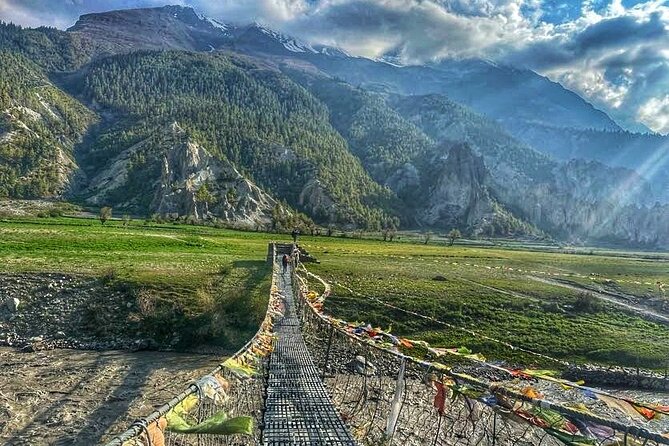
Choosing the right time to visit the Annapurna Circuit Trek can make all the difference in the trekking experience. The best months for trekking typically fall in spring and autumn. During these seasons, trekkers enjoy moderate temperatures and clear skies, ensuring breathtaking views of the majestic peaks.
Here are the ideal times to consider:
-
Spring (March to May) – Wildflowers bloom, and temperatures are pleasant.
-
Autumn (September to November) – The weather is stable, and stunning vistas await.
-
Avoid Monsoon (June to August) – Heavy rains can lead to landslides and poor visibility, making trekking challenging.
Planning a trek during these times enhances the adventure, allowing trekkers to fully appreciate the beauty of the Annapurna region.
Tips for Successful Trekking
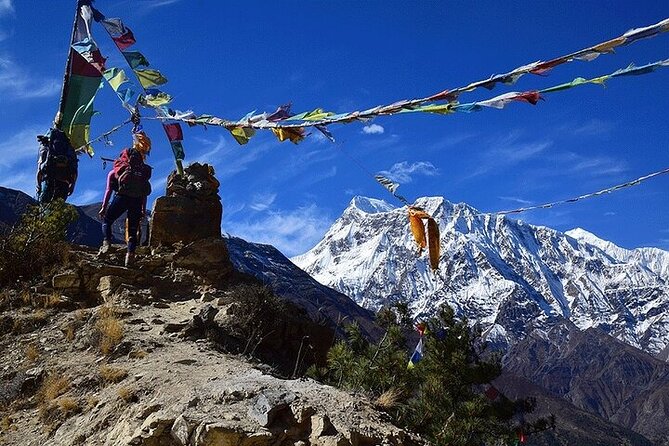
To ensure a rewarding experience on the Annapurna Circuit Trek, trekkers should prioritize proper preparation and planning. Essential tips include acclimatization, packing wisely, and staying hydrated. Trekkers should also engage with local culture and respect the environment.
| Tip | Importance |
|---|---|
| Acclimatization | Prevents altitude sickness |
| Proper Gear | Ensures comfort and safety |
| Hydration | Maintains energy levels |
| Cultural Respect | Enhances the trekking experience |
These steps not only enhance safety but also enrich the journey. By following these guidelines, trekkers can enjoy the stunning landscapes and vibrant culture of the Annapurna region, making their adventure truly unforgettable.
Frequently Asked Questions
What Is the Difficulty Level of the Annapurna Circuit Trek?
The trek’s difficulty level varies, with moderate physical fitness required. Participants often face steep ascents, altitude challenges, and changing weather. Proper preparation and acclimatization can enhance the experience and ensure a safer journey.
How Do I Prepare Physically for the Trek?
To prepare physically for the trek, he should engage in regular cardiovascular exercises, strength training, and practice hiking with a weighted backpack. Gradually increasing intensity will enhance endurance, ensuring he’s ready for the journey ahead.
Are There Any Altitude Sickness Precautions to Consider?
When considering altitude sickness precautions, travelers should acclimatize gradually, stay hydrated, and recognize symptoms early. They should consult a doctor beforehand and consider medications, ensuring their safety during high-altitude adventures.
What Types of Clothing Are Recommended for the Trek?
For the trek, he recommends layering clothing: moisture-wicking base layers, insulating mid-layers, and waterproof outer layers. Don’t forget sturdy hiking boots, warm hats, gloves, and sunglasses to protect against sun and cold.
Can I Charge My Electronic Devices During the Trek?
During the trek, charging electronic devices might be challenging. Some accommodations offer limited power sources, but it’s wise to bring a portable charger. Travelers should plan accordingly to ensure their devices remain charged throughout the journey.
The Sum Up
The Annapurna Circuit Trek offers adventurers an unforgettable experience, blending stunning natural beauty with rich cultural encounters. Whether navigating challenging terrains or soaking in the breathtaking views from Thorong La Pass, trekkers are sure to create lasting memories. By planning ahead and adhering to health and safety guidelines, they can fully enjoy this remarkable journey through the heart of Nepal. With the right preparation and the spirit of adventure, the Annapurna Circuit promises a trek like no other.
More Hiking & Trekking Tours in Kathmandu
More Tour Reviews in Kathmandu
Not for you? Here's more nearby things to do in Kathmandu we have reviewed
- From Lukla: Everest Base Camp (EBC) 10-Day Trek
- Kathmandu : Everest Mountain Flight – with Private Transfers
- Full Day : Kathmandu Sightseeing By Bus Day Trip
- Kathmandu: 7 UNESCO World Heritage Sites Day Tour
- Kathmandu: 8-Day Langtang Valley Trek with Transfers
- Thamel Rickshaw Tour
- Everest View Motorbike Tour- 6 Days
- Kathmandu: Top 4 UNESCO Sites Private/Group Tour with Lunch
- From Oceans to Mountains-9 Days (Nepal Guided Tour)
- From Kathmandu: Everest Base Camp Helicopter Tour landings
- Kathmandu: Food and Drink Walking Tour
- Life and spirituality tour of Kathmandu
